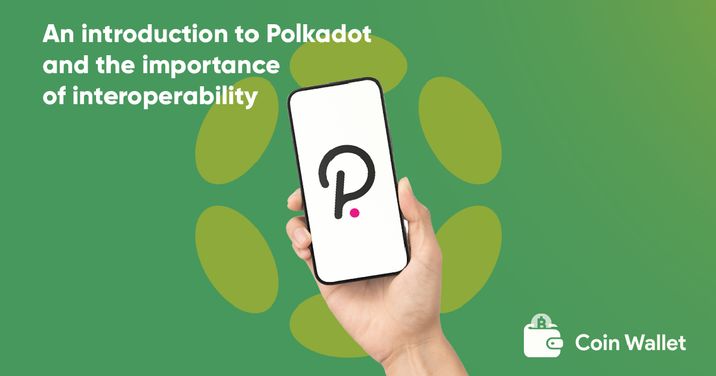An introduction to Polkadot and the importance of interoperability

Polkadot is a next-generation platform that unites different blockchains into a unified, scalable and interoperable network. Essentially, Polkadot enables cross-chain communication, which essentially means enabling different blockchains to interact with one another. In computer science, this is known as interoperability.
By providing the foundation for an interconnected ecosystem of blockchains, Polkadot will help evolve the blockchain industry, taking it to the next level and helping with the global introduction of web3 technologies.
What makes Polkadot unique?
Unlike most other blockchains, Polkadot enables true interoperability and cross-chain communication. This means that applications that are hosted on one network can interact with applications that are hosted on another network. This will open the door to new and innovative ways for blockchains to interact with each other thanks to the possibility of transferring information between chains.
Because of its unique nature, Polkadot is seen as a layer-0 network rather than a layer-1. This is because Polkadot enables different layer-1 networks to connect to a decentralized central source of information - the Relay Chain.
The best way to think about this is imaging lego. We build from the ground up. First we start with the first block, then the second, then the third. In this instance, Polkdot can be seen as the initial surface or floor that provides foundational support for a long line of connected first blocks, which represent layer-1 networks like Ethereum, Avalanche and Solana and the second blocks representing scaling solutions like Polygon.
What is DOT?
DOT is the native token for the Polkadot network. It has three main functions. First, it can be staked for the operation and security of the network. Secondly, it can be bonded to connect a blockchain to the Polkadot network. Thirdly, it gives holders a voice and a vote in the governance of the network.
Why is interoperability important?
Polkadot is attempting to solve the issue of interoperability because it is essential for mass adoption of blockchain technology. We need interoperability because without it, mass adoption would not be viable. By creating a unified network of blockchains, we can build applications and infrastructure that can easily be adopted to realise the full potential of what blockchain technology has to offer.
Without interoperability mass adoption would not be possible because it would be too hard to interact with applications that cannot universally talk to each other. Put it this way. Imagine how hard it would be to transfer money if you could only transfer money to those who use the same banking provider that you do. Luckily we have systems that make transactions between different providers possible like the SWIFT financial system. You can imagine Polkadot as the “blockchain version” of SWIFT because it allows different networks to interact with each other seamlessly and securely.
Polkadot lays the foundation for a new decentralized network of systems that significantly improves on current infrastructure. Polkadot is designed to enable a future where blockchain technology can thrive and realise its full potential by protecting our data, making economics more efficient, making financial services more inclusive and offering an open-source, peer-to-peer infrastructure that makes collaboration, interaction and transaction much better. Polkadot is taking blockchain technology to the next level by helping with mass adoption by making the adoption of blockchain technology much more convenient.